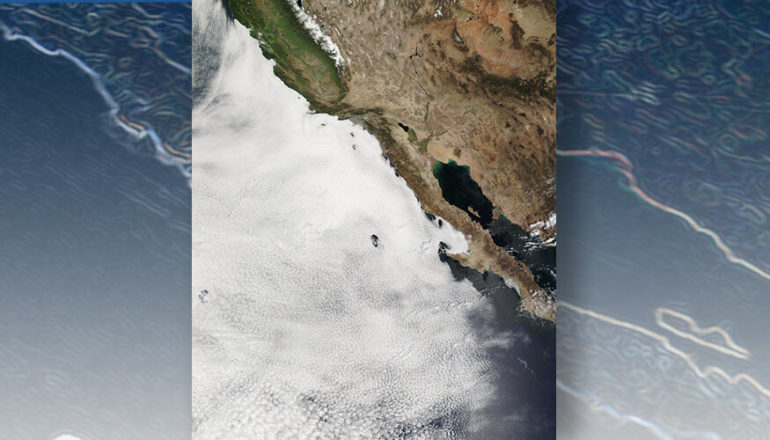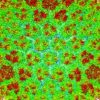A new analysis of satellite cloud observations finds that global warming causes low-level clouds over the oceans to decrease, leading to further warming. The work, led by researchers at Lawrence Livermore National Laboratory (LLNL), in collaboration with colleagues from Scripps Institution of Oceanography and the NASA Langley Research Center, appears online in Nature Climate Change.
The analysis of satellite observations helps to reduce a long-standing climate change uncertainty: How will marine low-level clouds evolve as the planet heats up, and how will this feed back on warming? These clouds, such as the stratocumulus clouds responsible for the often gloomy conditions of San Francisco summers, are widespread over the global oceans and strongly cool the planet by shading the surface from sunlight. The new study finds that, overall, this cooling effect will be modestly reduced as the concentration of carbon dioxide (CO2) in the atmosphere increases. The warming initially caused by increasing CO2 gets an extra push from reductions in clouds—an amplifying feedback.
The team analyzed satellite cloud observations to estimate how marine low clouds respond to natural variations in large-scale meteorological conditions. The researchers then used global climate model simulations to determine how these meteorological conditions will change as atmospheric CO2 increases. Using this method, they were able to calculate how the clouds will respond to this modified meteorological environment.
“We found that low clouds will likely amplify global warming, but the effect of this positive feedback is more muted compared to previous understanding,” said Tim Myers, LLNL climate scientist and lead author of the study.
The reason for the more muted effect? Regional differences in the response of low clouds to warming.
“Hot spots in stratocumulus and mid-latitude regions combine with relative doldrums in tropical shallow cumulus regions to produce a modest amplifying effect overall,” explained Ryan Scott, co-author of the study from Science Systems and Applications Inc. at NASA Langley Research Center.
The researchers then determined what their new low cloud feedback value means for climate sensitivity, the planetary warming resulting from a doubling of CO2. They found that climate sensitivity is likely (two-thirds chance) between 2.4 and 3.6 °C (4.3 and 6.5 °F), a lower and narrower range than in previous estimates.
Their results point to some key deficiencies in global climate models, which produce widely varying responses of marine low clouds to warming, in large part because they cannot directly simulate the small-scale physical processes controlling the clouds’ behavior.
“Models seem to overcook the shallow cumulus feedback, producing unrealistically large warming in some of the current models,” said LLNL co-author Mark Zelinka. “Yet some models don’t simulate an amplifying low cloud feedback at all, producing unrealistically muted warming.”
To test their method, the researchers turned to a highly unusual and extreme sea-surface warming event, or “marine heatwave,” observed in the northeast Pacific Ocean in 2015.
“We showed that we could accurately predict the cloud changes detected by satellites during the marine heat wave, so we are confident we can predict how the clouds will respond to global warming,” Myers explained.
Why clouds are the missing piece in the climate change puzzle
More information:
Timothy A. Myers et al. Observational constraints on low cloud feedback reduce uncertainty of climate sensitivity, Nature Climate Change (2021). DOI: 10.1038/s41558-021-01039-0
S. C. Sherwood et al. An Assessment of Earth’s Climate Sensitivity Using Multiple Lines of Evidence, Reviews of Geophysics (2020). DOI: 10.1029/2019RG000678
Provided by
Lawrence Livermore National Laboratory
Citation:
Observations show marine clouds amplify warming (2021, May 14)
retrieved 14 May 2021
from https://phys.org/news/2021-05-marine-clouds-amplify.html
This document is subject to copyright. Apart from any fair dealing for the purpose of private study or research, no
part may be reproduced without the written permission. The content is provided for information purposes only.



